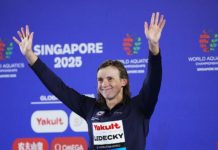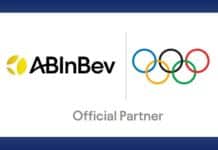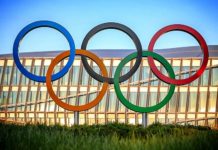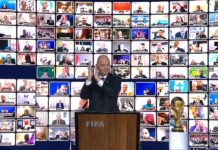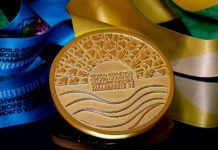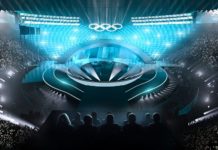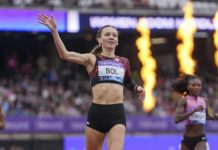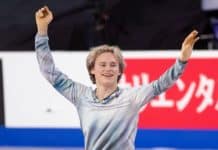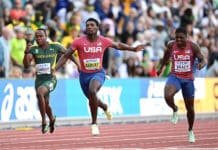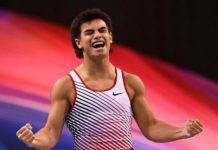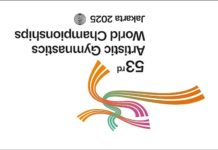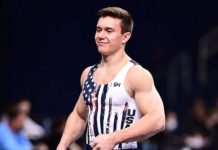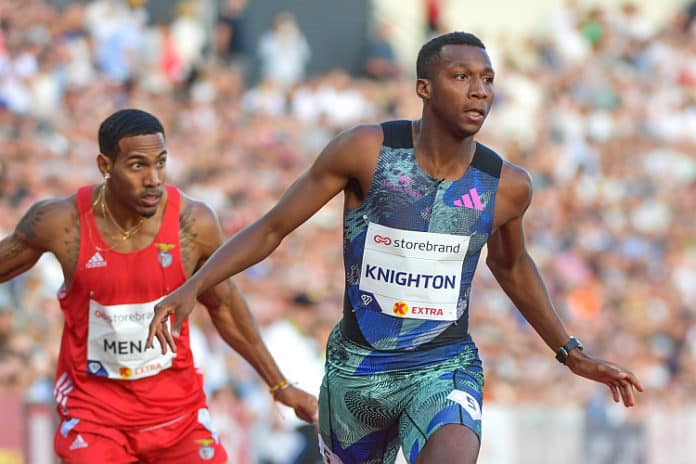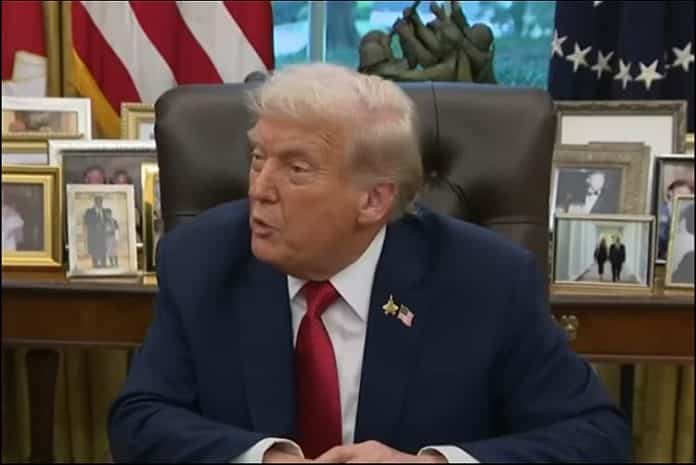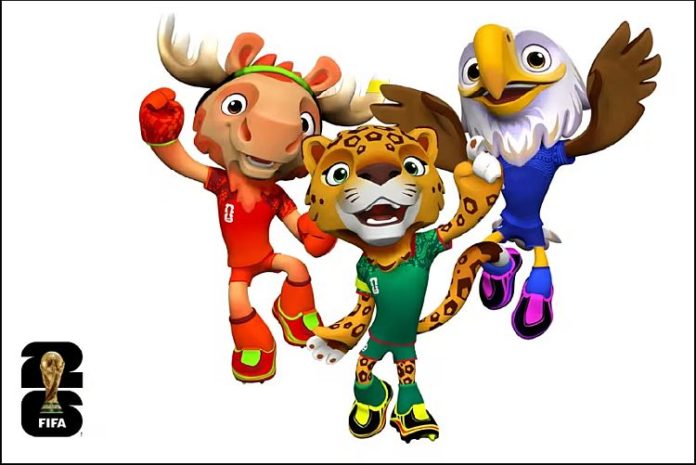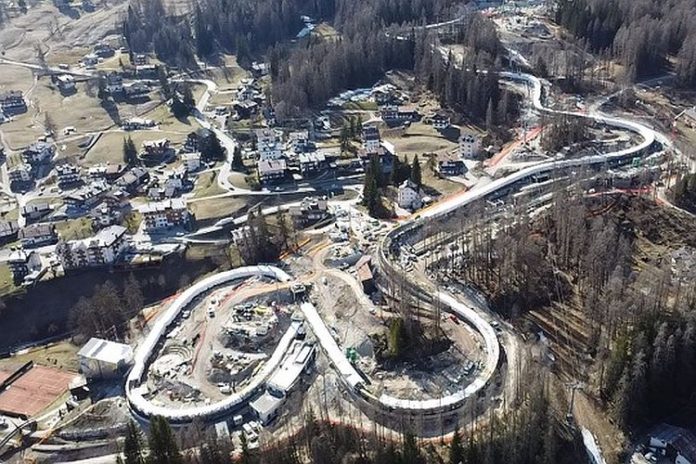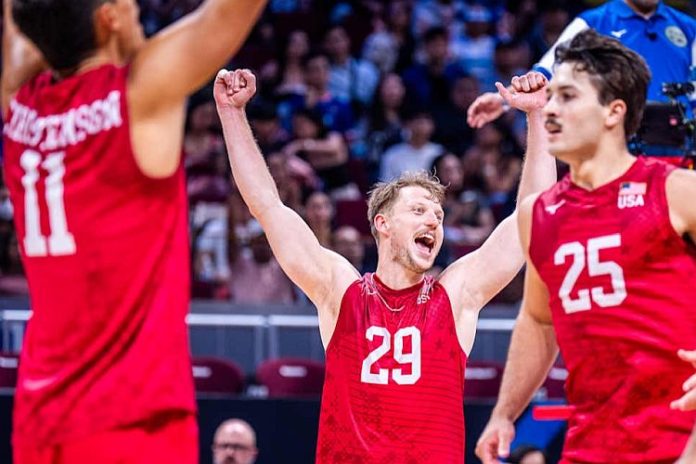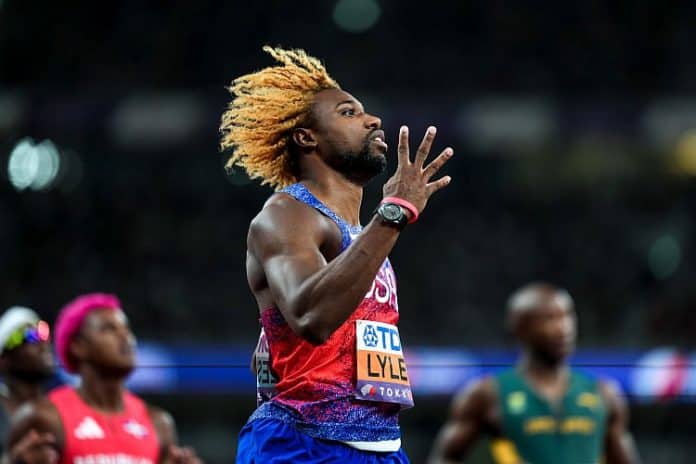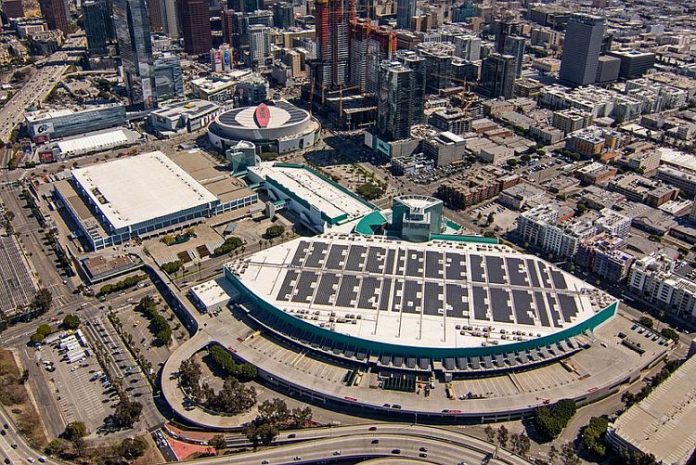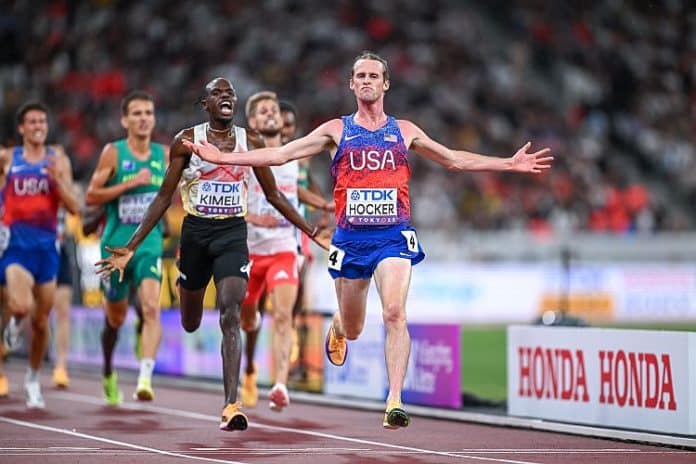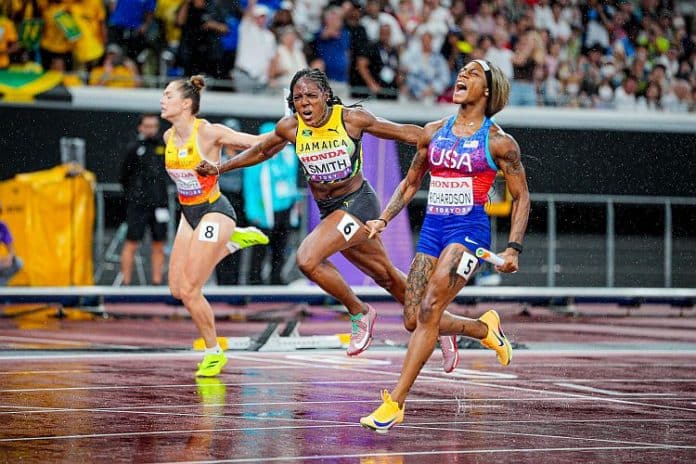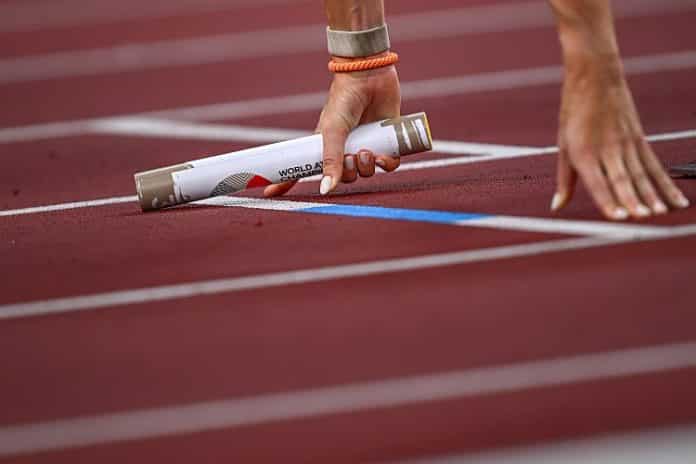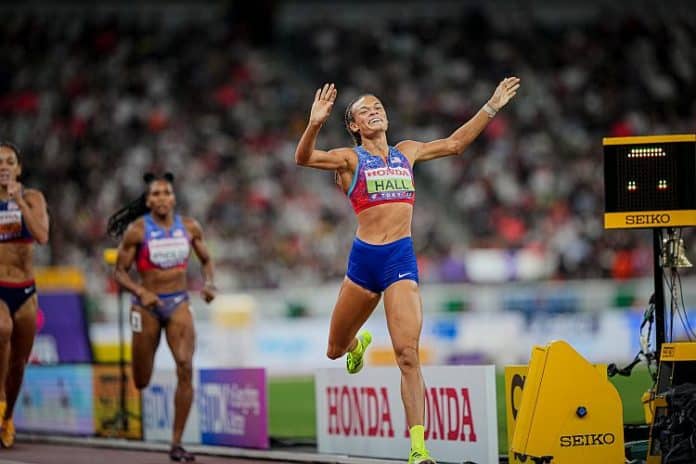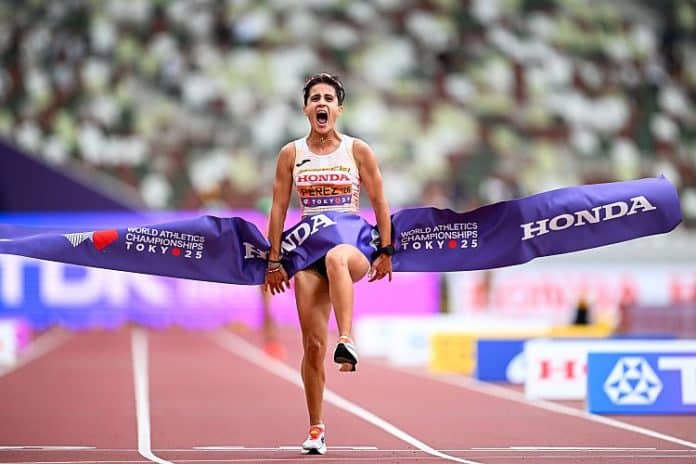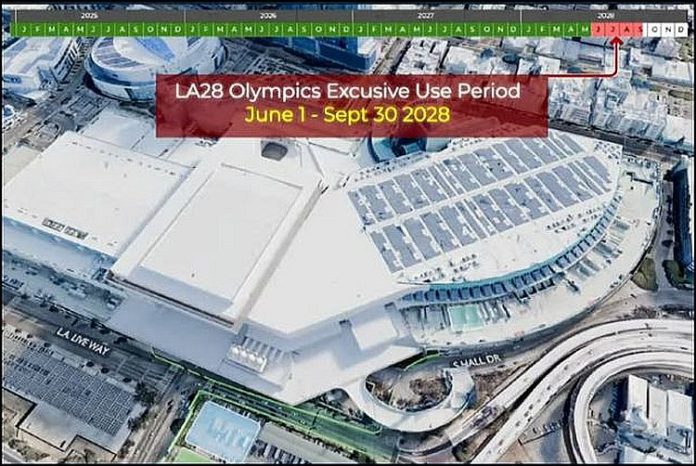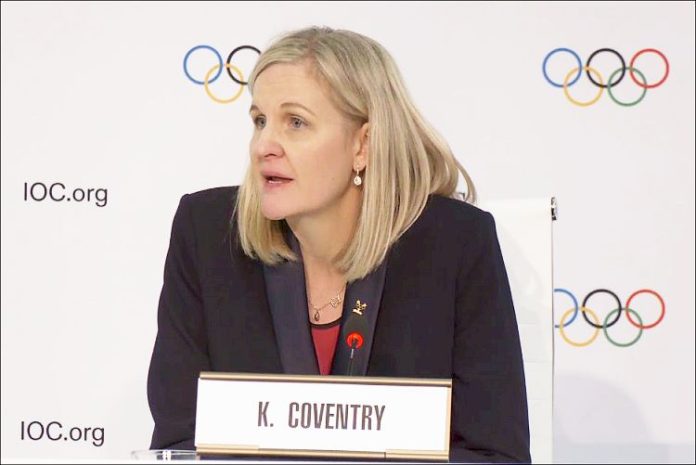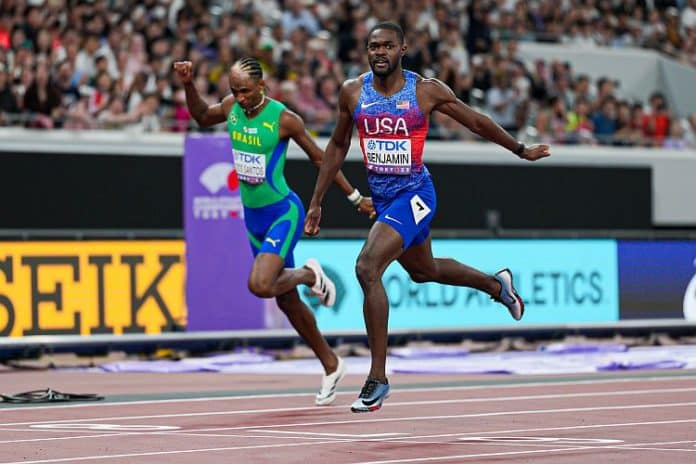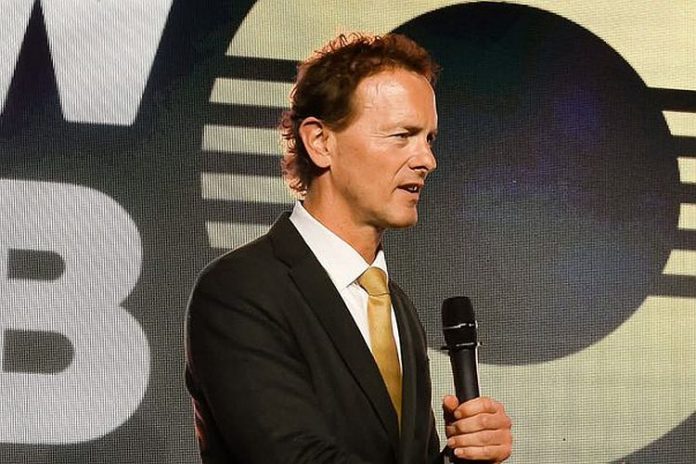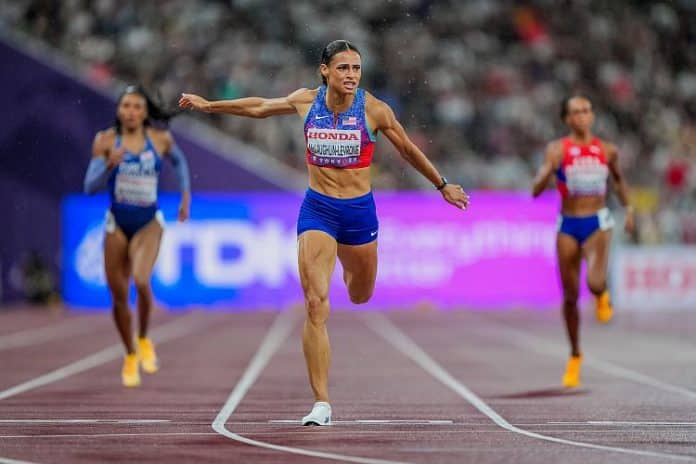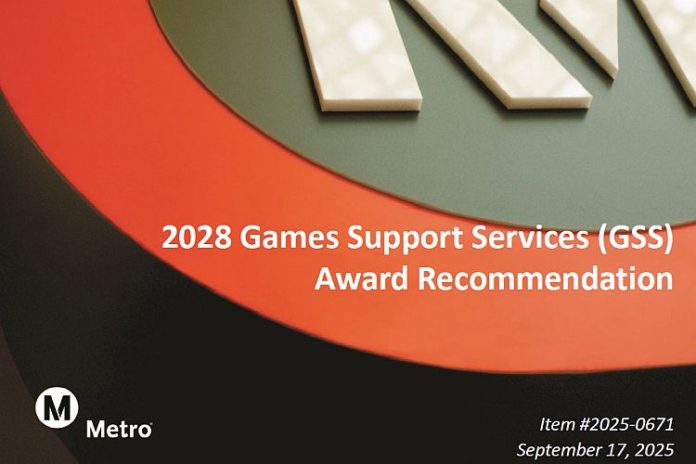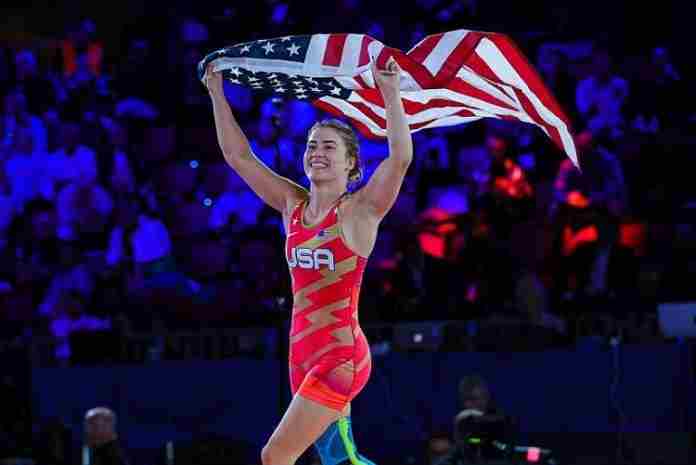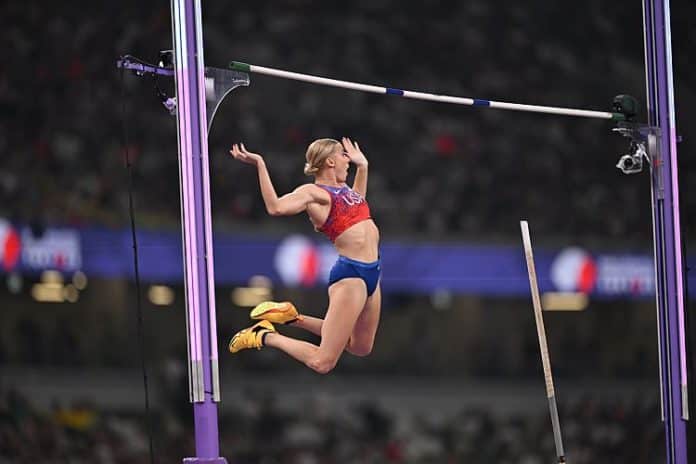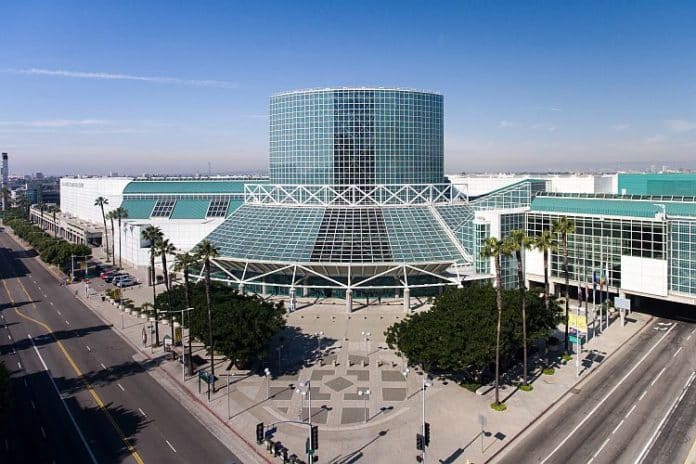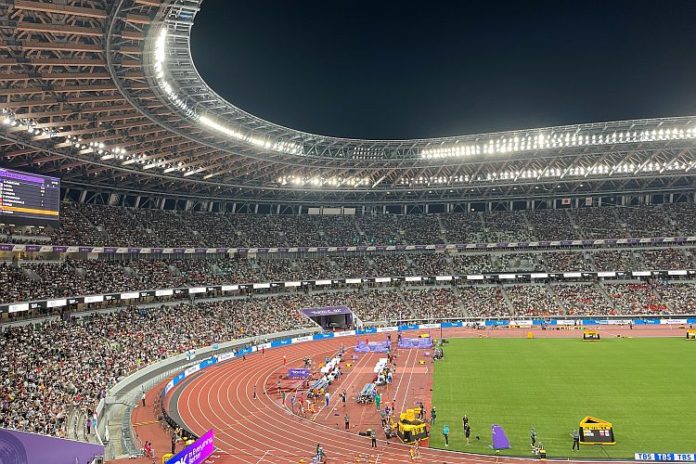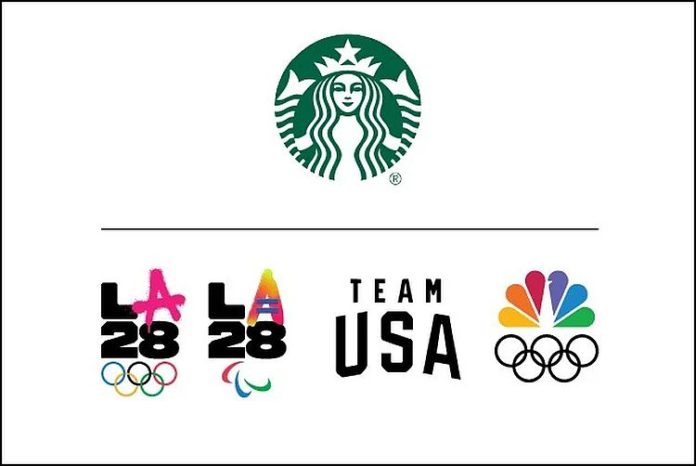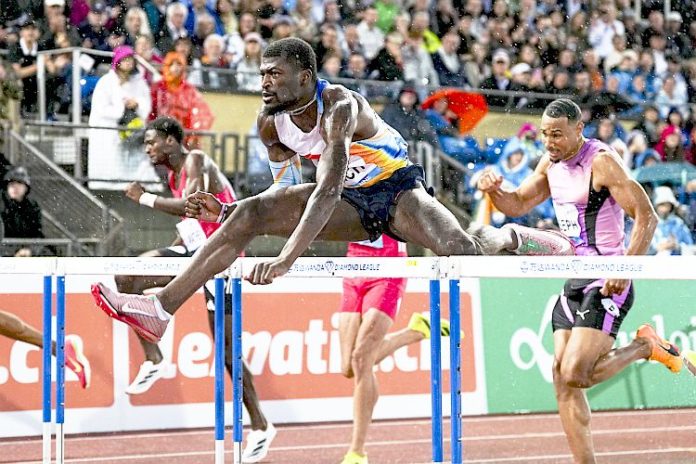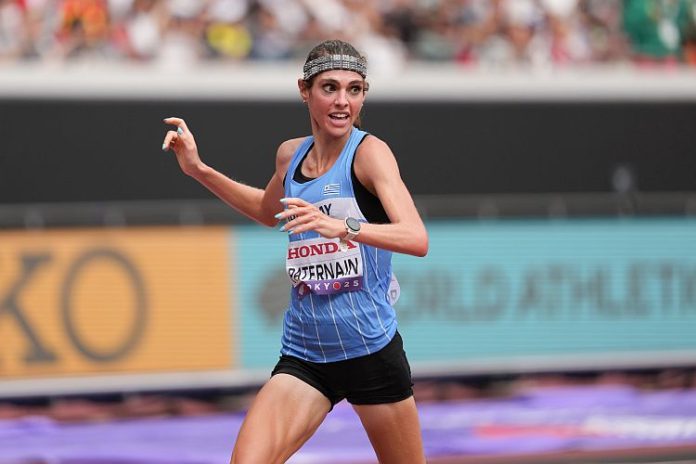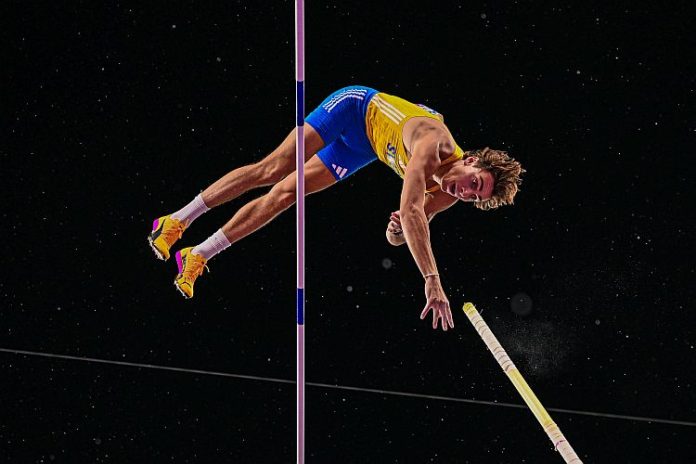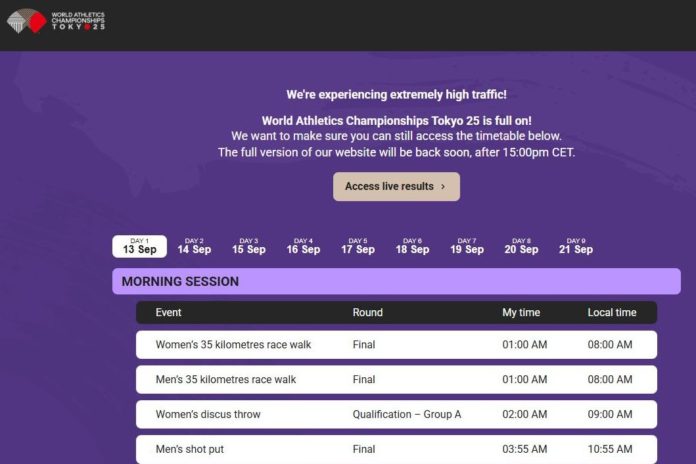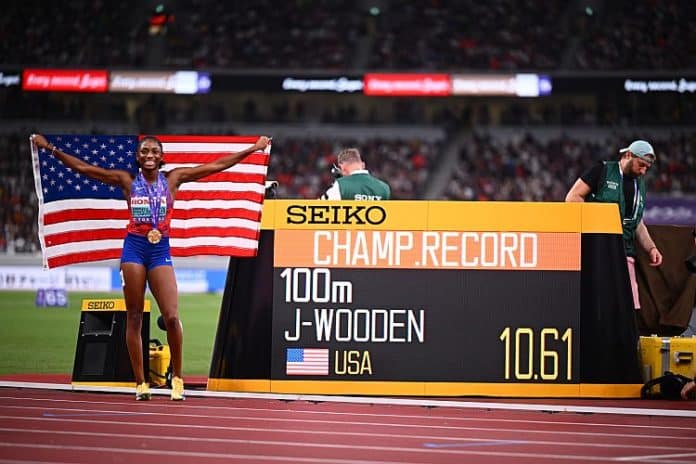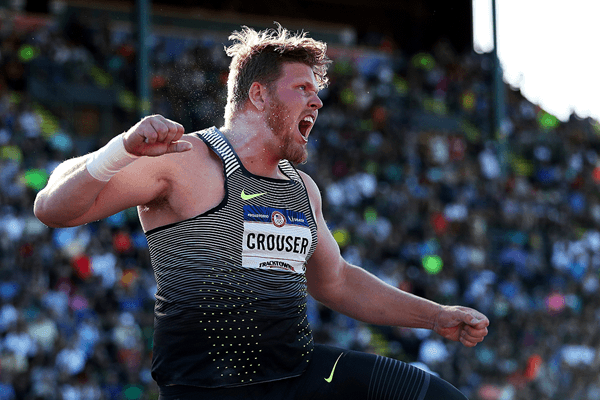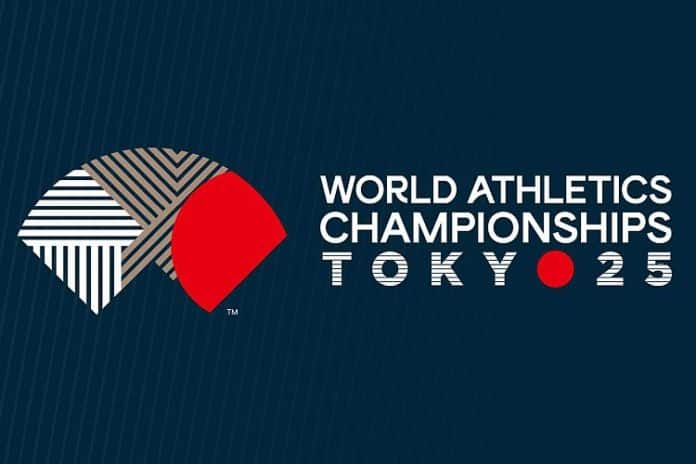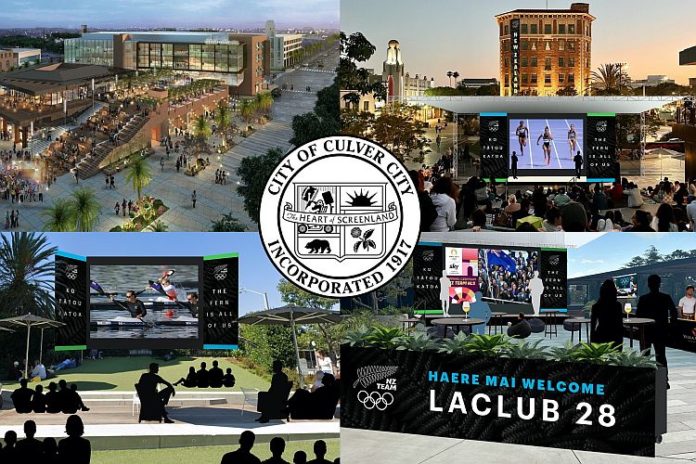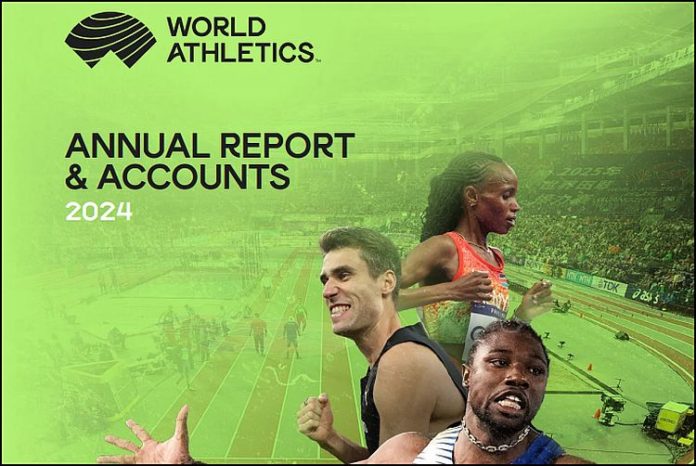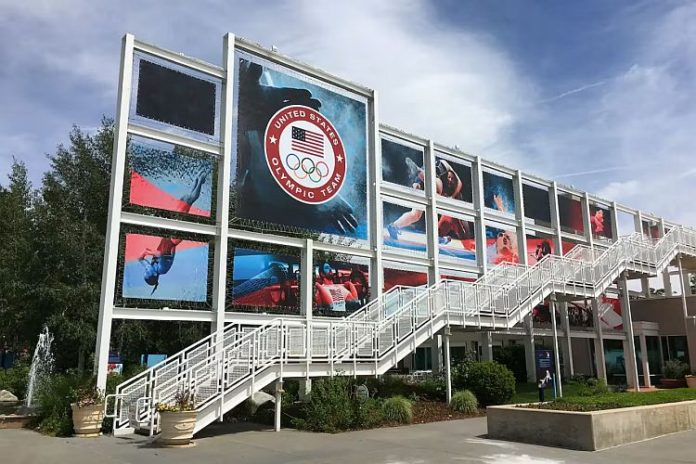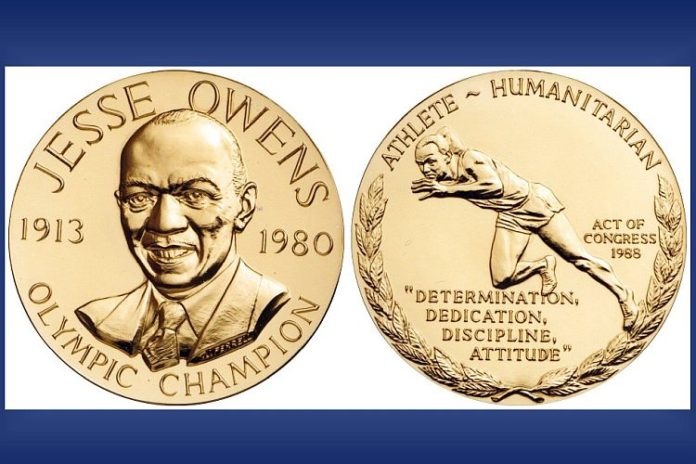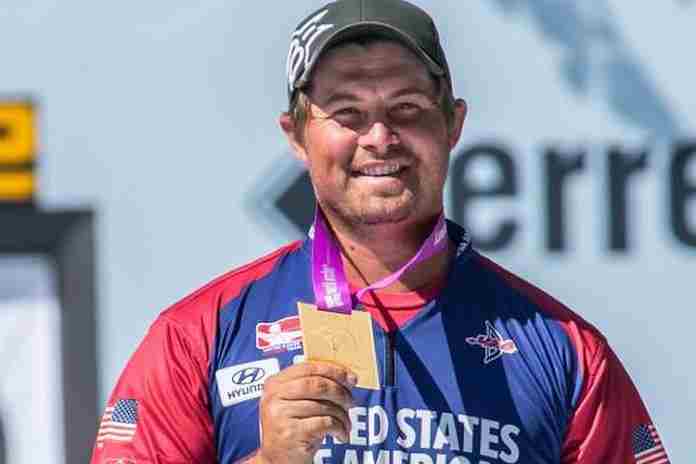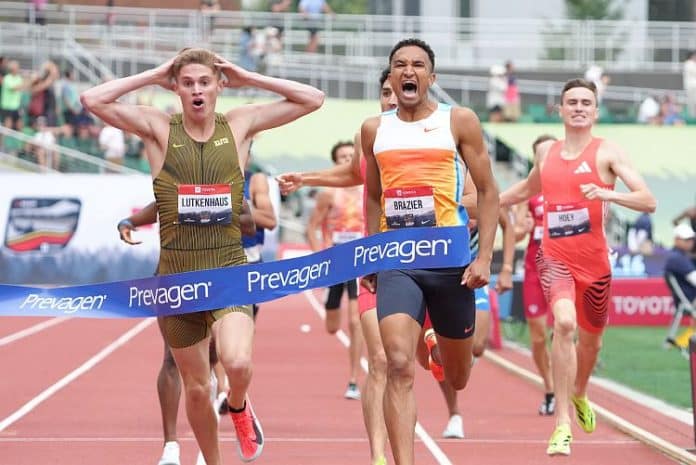★ The Sports Examiner: Chronicling the key competitive, economic and political forces shaping elite sport and the Olympic Movement.★
★ To get the daily Sports Examiner Recap by e-mail: sign up here! ★
≡ THE 5-RING CIRCUS ≡
● Olympic Games 2024: Paris ● The unique, all-electric Olympic “cauldron” from the 2024 Paris Games drew more than 2.5 million visitors during its 86-day showing at the Tuileries Gardens from 21 June to 14 September, with a high of more than 60,000 on 26 July, exactly a year after the opening of the 2024 Games.
● Olympic Games 2028: Los Angeles ● Los Angeles Mayor Karen Bass and Oklahoma City Mayor David Holt signed a memorandum of understanding on Friday, on the sidelines of the U.S. Conference of Mayors Fall Leadership Meeting, expressing a commitment “to hosting an inclusive Games.
“They will work to ensure that their cities share expertise in expanding economic opportunities for small businesses, women, minorities, veterans, and others. The mayors will also share best practices in promoting accessibility, health and wellness, youth sports, human rights, sustainability, small and local business success, and more.”
Oklahoma City will host slalom canoeing and softball in existing facilities in 2028.
● Olympic Winter Games 2026: Milan Cortina ● The first six of 10,001 torchbearers for the Winter Olympic torch relay were named by the Milan Cortina organizing committee on Friday:
● Singer-songwriter Achille Lauro;
● Retired women’s tennis star Flavia Pennetta;
● Motorcycle World Champion Francesco Bagnaia;
● Father Franco Antonello and his autistic son Andrea Antonello;
● Dario Pivirotto, who carried the flame for the 1956 and 2006 Winter Games in Italy;
● Chef Lucia Tellone of Abruzzo.
The Olympic Flame will be lit at Olympia on 26 November 2025 and will arrive in Italy – in Rome – on 4 December. The relay will begin on 6 December, cover 63 days, 12,000 km (7.456 miles) and pass through 60 cities. The opening ceremony in Milan is on 6 February 2026.
● Pan American Games 2031 ● The race for the 2031 Pan American Games is coming down to the wire, with site visits to candidates Asuncion (PAR) and Rio-Nitroi (BRA) underway from 28 September to 3 October.
The vote will be on 10 October at the Panam Sports Extraordinary General Assembly in Santiago (CHI).
● International Paralympic Committee ● The IPC Congress in Seoul (KOR) reinstated the National Paralympic Committees of Russia and Belarus to full status.
A vote to fully suspend Russia – which has been partially suspended since 2022 – failed by 111-55 with 11 abstaining, and then a vote to continue the partial suspension failed by 91-77 with eight abstentions. A vote to fully suspend Belarus failed by 119-48 with nine abstentions and then a vote to continue the partial suspension of Belarus failed by 103-63 with 10 abstentions.
Ukraine’s Sports Minister Matviy Bidnyi told Agence France Presse, “We call on our European partners, who will host the upcoming Winter Paralympic Games, not to allow the flag of the aggressor state to be raised over the free and democratic space while the war of aggression continues.”
President Andrew Parsons (BRA) won a third and final term easily, winning re-election over Hyun-bae Dong (KOR) by 109-68. The IPC also admitted national committees from Bolivia and South Sudan, bringing its national federation total to 185.
Elections for the members-at-large on the IPC Board were not completed and will be taken up at a special session, to be arranged. American Paralympic star Brad Snyder is a candidate for an at-large position on the IPC Board.
● Bobsled & Skeleton ● U.S. Bobsled pilot Geoff Gadbois, whose Two-Man sled placed 12th in the 2025 World Championships and 18th in the Four-Man, has set up a GoFundMe page to try and raise $120,000:
“The United States Olympic Team does not receive government funding. Athletes rely heavily on sponsorships, federations, and secondhand jobs to fund their Olympic journey. The US Men’s Bobsled team is currently lacking funding to send the full World Cup team on tour this season. This lack of funding severely jeopardizes our ability to qualify a full Men’s Team at the Milan/Cortina Olympics. The Men’s Team now has to self-fund $120k in order to bring their 3rd men’s team and compete on the World Cup. Our team is more than capable of qualifying a 3 mens sleds and medaling at the Olympics this winter. We need your financial support to achieve our goals for USA.”
USA Bobsled & Skeleton is funding two men’s sleds for IBSF World Cup competitions, but not Gadbois’ third sled.
¶
U.S. sledder Manteo Mitchell, now 38, who won a London 2012 Olympic men’s 4×400 m silver from the prelims despite breaking his left leg during his race, and then turned to bobsledding, has been suspended by an independent arbitrator for two years for an unintentional doping positive for the steroids oxymetholone and/or methasterone.
The result came from an out-of-competition test on 2 February 2025 and his suspension runs from 3 March 2025, eliminating him from contention for the U.S. team for the 2026 Winter Games.
● Gymnastics ● Indonesia’s Naufal Takdir Al Bari, 19, died in Russia from a fall off of the horizontal bar during training, injuring his neck while landing in the foam floor pit. He was training in Penza, 388 miles southeast of Moscow, and spent 12 days in intensive care, but died from his injuries.
He was slated to participate in the World Artistic Championships in October, in Jakarta (INA).
¶
Olympic alternate Hezly Rivera, the 2025 USA Gymnastics national All-Around champion and 10th-place finisher Claire Pease, in her first senior nationals, are both out of the U.S. World Championships selection camp in Crossville, Tennessee on 30 September and 1 October.
Rivera wrote on Instagram: “I wanted to share personally that I recently rolled my ankle. After talking it through with my doctor and coaches, I’ve decided the best thing right now is to sit out of the Worlds Selection Camp. I’m definitely bummed about the timing, but I’m excited to cheer on my teammates and Team USA from home.”
Pease suffered the same injury, writing on her Instagram page, “While this is the absolute worst timing, my family, coaches and I decided it’s best to heal and come back for next season.”
● Swimming ● The 22nd annual USA Swimming Golden Goggles awards program and fund-raiser in Denver, Colorado, saw distance Freestyle superstar Katie Ledecky honored with her 10th “Female Athlete of the Year” award, after winning two more golds at the World Aquatics Championships in Singapore.
Luca Urlando, the men’s 200 m Butterfly World Champion, won the men’s athletes of the year trophy and Ivan Puskovitch took the Open Water swimmer of the year award.
Todd Desorbo, the University of Virginia coach, won coach of the year honors for the second straight year.
● Volleyball ● The International Volleyball Federation (FIVB) Board of Administration selected the U.S. and Canada as the co-hosts for the 2027 FIVB Women’s World Championship, the first time the event will be in either country.
The final will be at the 2028 Olympic venue: the Honda Center in Anaheim, California. Four other cities in the U.S. and Canada will host pool play and the round-of-16 playoffs.
The 2029 Men’s Worlds was awarded to Doha (QAT) and the women’s to the Philippines.
≡ RESULTS ≡
● Badminton ● Japan’s Akane Yamaguchi, a three-time World Champion, disappointed the home crowd in Suwon-si (KOR) with a win at the BWF World Tour Korea Open over Korea’s Olympic women’s champion, Se Young An.
Yamaguchi swept the final by 21-18, 21-13 for a modest upset win over the top-seeded An. The top men’s seed, Denmark’s four-time Worlds medalist Anders Antonsen, was also upset, by Indonesia’s Jonatan Christie, 21-10, 15-21, 21-17.
The home crowd did cheer Korean wins in the men’s and women’s Doubles, while China won in Mixed Doubles.
● Beach Volleyball ● The all-Brazilian women’s final at the Beach Pro Tour Elite 16 in Rio de Janeiro (BRA) came down to a third set as new stars Thamela Galil and Victoria Tosta battled Carol Solberg and Rebecca Silva. Thamela and Victoria took the first set by 21-18, then lost the second by the same score. In the final set, Carol and Rebecca managed a 15-11 win for the match, their second Elite 16 win of the season and third medal.
Coming off of a silver-medal performance the week before, Americans Terese Cannon and Megan Kraft defeated last week’s winners, Molly Shaw and Kelly Cheng (USA), in the women’s bronze-medal match, 21-13, 24-22. It’s the third medal of the season for Cannon and Kraft (0-2-1).
The men’s final saw Qatar stars Cherif Younousse and Ahmed Tijan, the Tokyo 2020 bronze winners, slide past Jorge Alayo and Noslen Diaz (CUB), 21-14, 17-21, 18-16.
In the men’s third-place match, Stefan Boermans and Yorick de Groot (NED) defeated Martins Plavins and Kristians Fokerots (LAT), 17-21, 21-17, 15-11.
● Curling ● At the Grand Slam of Curling Masters in London, Ontario, defending men’s champion Ross Whyte (SCO) and his rink made it to the final, but it was Matt Dunstone (CAN) that managed a 6-4 win, scoring two points in the extra (9th) end. It’s Dunstone’s second Masters title, also in the 2019-20 season.
The women’s final pitted four-time World Champion Silvana Tirinzoni (SUI) against three-time Worlds winner Rachel Homan (CAN). Tirinzoni was up, 3-2, after four ends, but two points each in the fifth and sixth ends gave Homan a 6-3 lead and while the Swiss got one back in the seventh, Homan claimed a 6-4 win and her fifth Masters title in nine finals.
● Cycling ● Defending champion Tadej Pogacar (SLO) once again showed he is the best cyclist in the world at the UCI World Road Championships in Kigali (RWA), defending his 2024 Worlds gold with a sensational win by almost a minute and a half.
The hilly, 267.5 km course had Mt. Kigali in the middle of the race and Pogacar attack hard on the incline, with 100 km remaining. He broke up the peloton and sped away and prime challenger, 2022 World Champion Remco Evenepoel (BEL), had bike trouble with 76 km and had to swap to a new one.
He finally caught up to the chase pack with 64 km to go and pushed immediately, closing with Tom Pidcock (GBR), Ben Healy (IRL), and Dane Matthias Sjkelmose to within a minute of Pogacar with 45 km left.
But they could not get closer and even with a final attack by Evenepoel with 20 km left, Pogacar rode home with a win in 6:21:20, with Evenepoel at +1:28, then Healy (+2:16), and Sjkelmose (+2:53). Pidcock was 10th; the top American was Kevin Vermaerke at +10:16.
It’s the eighth win of the year for Pogacar, including the Tour de France and Monument races at the Ronde van Vlaanderen and Liege-Bastogne-Liege. He’s slated to race the final Monument of 2025 – Il Lombardia – on 11 October.
In seven UCI Women’s World Tour one-day races in 2025. Canada’s Magdeleine Vallieras had a best finish of 14th at La Fleche Wallonne Feminine in Belgium in April. She was seventh at the Canadian national championships road race in June.
On Saturday, she attacked with 2.3 km to go and raced away to become a shock World Champion! She finished the hilly 164.6 km route in 4:34:48, 23 seconds ahead of Niamh Fisher-Black (NZL) and 27 seconds ahead of Mavi Garcia (ESP). American star Chloe Dygert was 17th at +1:54.
● Gymnastics ● Turkey’s Parallel Bars star Ferhat Arican claimed two wins at the FIG Artistic World Challenge Cup in Szombathely (HUN), the final event of the Cup season.
Now 32, he won the first-day Pommel Horse final at 14.000, then came back to win on the Parallel Bars – he was the Tokyo Olympic bronzer – at 14.250. Turkey got a third win from Mehmet Kosak on the Rings at 13.900.
Kazakhstan claimed two wins, from Dmitriy Patanin on Floor (13.900) and 2023 Worlds bronzer Milad Karimi on the Horizontal Bar at 14.750. The Vault went to Cyprus’ Neofytos Kyriakou, at 13.850.
The four women’s events had four different winners: Charlize Moerz (AUT: 13.625) on Vault, Zoja Szekely (HUN: 13.650) on the Uneven Bars, Flavia Saraiva (BRA: 13.800) on Beam, and Denisa Golgota (ROU: 12.750) on Floor.
¶
At the FIG Trampoline World Cup in Varna (BUL), two-time World Champion Hikaru Mori (JPN) prevailed in the women’s final, scoring 56.60, while Russian “neutral” Dmitriy Nartov won the men’s final at 61.58. Americans Ruben Padilla (60.09) and Ryan MacCagnan (60.06) finished 3-4.
In the Synchro events, Mori and Saki Tanaka won at 50.330, with Maia Amano and Cheyenne Webster (USA: 44.510) in sixth. Yusei Matsumoto and Hayato Miyano (JPN: 54.730) won the men’s gold, with MacCagnan and Padilla third (52.140).
● Judo ● Japan dominated the IJF World Tour Qingdao Grand Prix in China, taking five wins and eight medals overall, with victories from Hayato Kondo (men: 60 kg), Yudai Tanaka (men: 73 kg) and Yoshito Hojo (men: 81 kg) and women’s titles from Rin Takeuchi at 52 kg and Momo Tamaoki at 57 kg.
● Rowing ● The U.S. scored an important win at the World Rowing Championships in Shanghai (CHN), with the women taking the Fours title as Camille Vandermeer, Azja Czajkowski, Teal Cohen and Kaitlin Knifton won in 6:27.71, comfortably head of Romania (6:28.44) and New Zealand (6:31.11).
It was the first U.S. gold in an Olympic-event final since American women’s boats won the Fours and Eights back in 2018! It was the second U.S. Olympic-event medal of the Worlds, after a bronze in Pairs earlier.
The Netherlands dominated the other women’s racing, taking the Double Sculls with Roos de Jong and Benthe Boonstra), the Quadruple Sculls, and the Eights, beating Olympic champs Romania. The Romanians already had a win in the Pairs from Maria Rusu and Simona Radis. Ireland’s Fiona Murtagh won the women’s Single Sculls for her first Worlds medal, in 7:12.27, edging Lauren Henry (GBR: 7:12.30).
The Dutch won the men’s Eights in 5:27.67, with the U.S. squad in third (5:30.09). Britain won in Fours, and New Zealand in Pairs. Greek Stefanos Ntouskos won the Single Sculls in 6:36.75, beating Olympic winner Oliver Zeidler (GER: 6:37.17). Poland won the Double Sculls and Italy took the Quadruple Sculls.
● Rugby ● Homestanding England, the top seed, won the World Rugby Women’s World Cup at Twickenham Stadium in London, crushing Canada, 33-13, in the final on Saturday. New Zealand won the bronze over France, 42-26.
The English women breezed through the group stage at 3-0 and 208-17 on the scoreboard, then won their playoff matches by 40-8, 35-17 over France and then 33-13 in the final. It’s the third World Cup win for England, previously in 1994 and 2014. Amazingly, it came in England’s seventh straight World Cup final, with a 1-5 record in the prior six. In the 10 editions of the tournament, England has been in every final except one!
Attendance for the 32 matches was 441, 356 for an average of 13,792.
● Sport Climbing ● The biggest star in climbing remains Slovenia’s Janja Garnbret at the IFSC World Championships in Seoul (KOR), as she sailed to wins in both the Lead and Boulder events.
In Lead, Garnbret reached the top in her final, ahead of Slovenian teammate Rosa Rekar (45), then Chae-hyun Seo (KOR: 44+) with Britain’s Erin McNeice in fourth (44) and Annie Sanders of the U.S. in fifth (42+). On Boulder, Garnbret was sensational in the final, scoring 99.5 points, way ahead of 2023 silver medalist Oriane Bertone (FRA: 85.0) and American Melina Costanza (59.8).
That’s four Worlds gold for Garnbret in Boulder and three in Lead.
The men’s Lead final was the first Worlds gold for home favorite Do-hyun Lee (KOR: 43+), ahead of Japan’s Satone Yoshida (43+), and teammate Taisei Homma (JPN: 42+). The men’s Boulder final had Paris 2024 combined silver medalist Soratu Anrako (JPN: 18 years old) an easy winner at 99.2, ahead of 2023 runner-up Mejdi Schalk (FRA: 84.5) and Korea’s 2023 Boulder third-placer Lee at 84.2.
● Triathlon ● Swiss Max Studer produced an unexpected win at the World Triathlon Championship Series in Weihai (CHN), taking control early on the 10 km run and winning by 20 seconds. German Henry Graf was second, following up on his win at Karlovy Vary (CE).
Britain’s 2023 World Champion Beth Potter (GBR) ran away with the women’s race on the run segment and won by more than 40 seconds over German Lisa Tertsch and Tanja Neubert (GER). Times were not available as the results reporting was in error.
● Volleyball ● Italy defended in 2022 FIVB men’s World Championship, this time in Pasay (PHI) by defeating upset-minded Bulgaria, 25-21, 25-17, 17-25, 25-10, on Sunday.
Ranked no. 5 coming in, the Italians were 2-1 in group play – losing to Belgium – then swept Argentina (3-0) in the round-of-16, swept Belgium in the quarters, swept no. 1 Poland in the semis and finished off with a 3-1 win in the final!
The Bulgarians, after their comeback from 0-2 down against the U.S., dispatched the Czech Republic by 3-1 to get to the final and win their first medal since 2006.
By winning, Italy continued a streak of multi-title winners, with victories at the 2022 and 2025 Worlds. They were preceded by two straight wins for Poland (2014-18), three straight by Brazil (2002-06-10) and three straight by Italy in 1990-94-98. The U.S. won in 1986, following two straight wins for the USSR in 1978 and 1982.
¶
★ Receive our exclusive, weekday TSX Recap by e-mail by clicking here.
★ Sign up a friend to receive the TSX Recap by clicking here.
★ Please consider a donation here to keep this site going.
For our updated, 699-event International Sports Calendar for 2025, 2026 and beyond, by date and by sport, click here!


